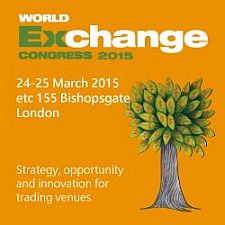Korea FSC Roadmap For Further Development Of Korea’s Derivatives Market
OVERVIEW
The FSC announced its roadmap for further development of Korea derivatives market. The plan has set a clear goal and regulatory principle tailored to each type of derivatives market as follows:
- Exchange-traded derivative will be developed into a risk-managed market with focus on professional investors through greater autonomy in the market and creation of new markets.
- Over-the-counter derivatives market will be grown into a more transparent market with lower trading risk by phasing in central counterparty(CCP) and introducing trade repository (TR) systems.
- Derivatives-linked securities market will be fostered into a sound investment market for retail investors by providing more diversified products and making it easier for investors compare and choose products.
EXCHANGE-TRADED DERIVATIVES MARKETS
[MARKET AUTONOMY]
1. Greater autonomy in market operation
Markets will be granted greater autonomy under the condition that it would not undermine stable operation of the markets and investor protection.Details related with market operation such as quotation price units or exercise price of options will be deliberated and decided by a derivatives market committee within the KRX.
Currently, the items of underlying assets for individual equity futures and options are specified by the Derivatives Market Business Regulation of the KRX. The Regulation will be revised to allow automatic listing of equities that meet certain requirements as underlying assets.
2. Introduction of new derivatives
The exchange-traded derivatives market has been strictly limited with only 15 products listed on the KRX, while 1,303 products traded on CME in the U.S., 274 on Eurex in Germany and 100 in Japan.
Reflecting the trading volume of spot transactions, the FSC will actively introduce new derivatives markets in high demand such as V-KOSPI 200 futures, sector index futures and night time trading of US dollar futures, which will provide professional investors with an instrument of risk hedging.
IMPROVEMENTS FOR MARKET PARTICIPANTS
1. Introduction of qualified retail investors
In order to prevent retail investors from making reckless investments and incurring huge losses in derivatives markets, the FSC plans to allow only “qualified” retail investors to newly enter derivatives markets by establishing two stages of entry barriers.
- (1st stage) Retail investors who have completed prior education program and mock trading; and deposit at least KRW 30 million as initial margin will be allowed to trade simply-structured futures such as KOSPI200 futures or individual stock futures.
- (2nd stage) Retail investors with more than one-year experience allowed under the 1st stage and KRW 50 million of minimum margin will be allowed to trade complicatedly structured-futures and options such as V-SPI200 futures.
2. Expanded participation of professional investors
Currently, only securities companies are allowed to directly trade exchange-traded derivatives. It restricts further transactions of treasury bond and currently derivatives, which account for only small portion of securities firms’ portfolio.
The FSC plans to allow banks to directly trade treasury bond and currency derivatives on the KRX, given that banks have expertise in transaction of treasury bonds and currencies and sufficient experience of trading in OTC derivatives markets. The direct trading of banks will be limited to USD futures and 20-year treasury bond futures newly introduced; and gradually expanded to other products depending on market situations within the next five years.
The measure is expected to provide institutional investors and commodity traders with effective tools for hedging currency- or interest rate-related risks and contribute to a balanced growth of derivatives markets, currently skewed toward equity derivatives.
ENHANCED STABILITY IN TRANSACTION
1. Settlement stability
In response to growing risks of default and huge losses with an increase in algorithm trading the FSC plans to give the KRX greater authority to monitor and supervise default risks of security firms. The FSC is also considering revising the so-called default “waterfall”, the procedure of using default fund to repay counterparties to match global standards.
Under the current FSCMA Act, the pool of default fund is injected prior to the KRX’s own capital to cover a defaulting member’s losses in case of default. The FSC is looking to revise the default procedure in accordance with international standards so that the capital of the clearing house will be used prior to the pool of default fund to absorb the losses. Details will be set out by the end of 2014.
2. Transaction stability
The FSC plans to introduce price banding limits on futures and options trading to mitigate excessive price fluctuations. The KRX will be granted authority to take remedies for huge losses incurred by erroneous orders.
3. Monitoring on high-frequency trading
The KEZ will strengthen relevant regulations and tighten monitoring on high-frequency trading in order to prevent market abuse and unfair trading.
OVER-THE-COUNTER(OTC) DERIVATIVES MARKET
The central counterparty(CCP) for OTC derivatives was introduced in 2013, following the agreement of the G20 in the Pittsburgh summit in 2009. Starting from June 30 this year, qualified won-denominated interest rate swaps(IRS) transactions will be required to be cleared through the CCP. The scope of derivatives contracts subject to the CCP clearings will be gradually expanded from IRS to NDF to CDS and other derivatives.
Trade Repository(TR) system will be introduced to improve transparency of OTC derivatives trade in accordance to the G20 after considering domestic conditions and international standards.
DERIVATIVES-LINKED SECURITIES (DLS) MARKET
The current law allows issuance of a variety of structured securities. Rypes of products actually being traded in the market, however, are limited to equity-linked securities (ELS), derivatives-linked securities(DLS) and equity linked warrant (ELW). To such backdrop, exchange-traded note(ETN) will be introduced to be listed and traded on the KRX. Issuance structure of ELS will be diversified. Public disclosure and sales method of ELS and DLS will be improved to make it easier for investors to compare and choose products. Issuance terms of ELW will be standardized.
Related Articles
Korea FSS
-

Japan FSA Signed Memorandum Of Cooperation With The Financial Services Commission And The Financial Supervisory Service Of South Korea
Kenichi SADO, Japan FSA Chairman, Securities and Exchange Surveillance >>
Korea Financial Services Commission (FSC)
-
Korea FSC Roadmap For Further Development Of Korea’s Derivatives Market
OVERVIEW The FSC announced its roadmap for further development of Korea >>
Short Selling
-
Korea FSC Reporting System for High Volume Short Sales
BACKGROUND Since the global financial crisis, major economies have adopted a >>




